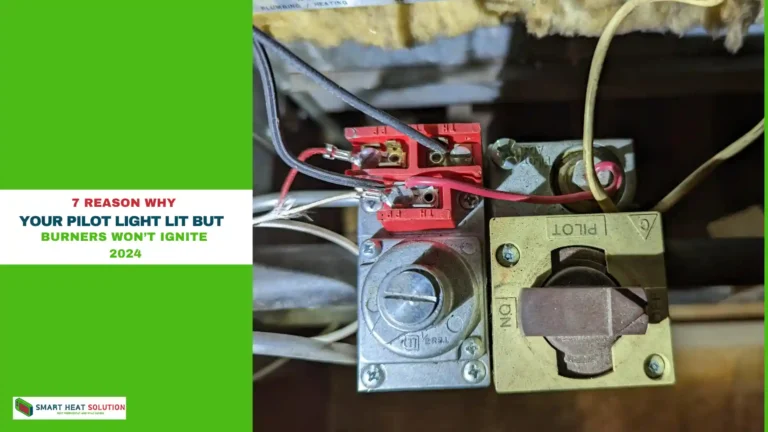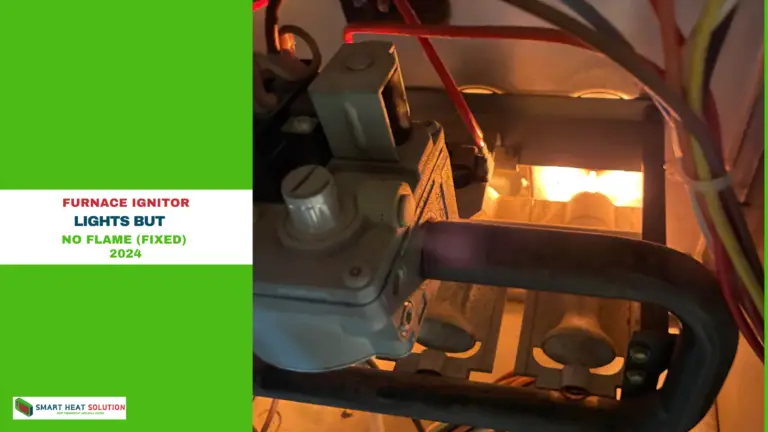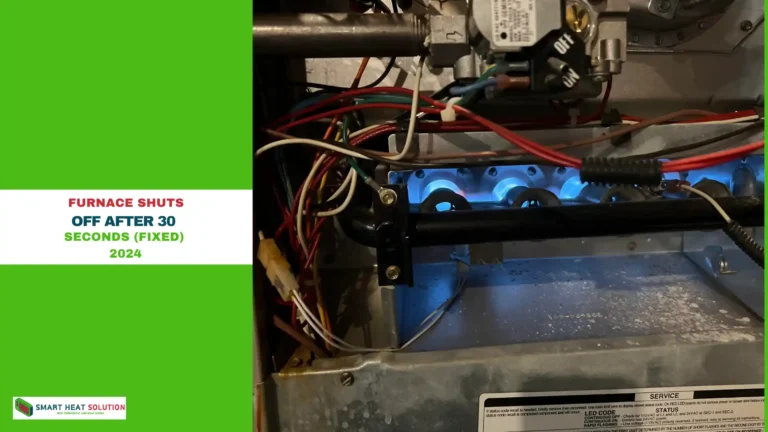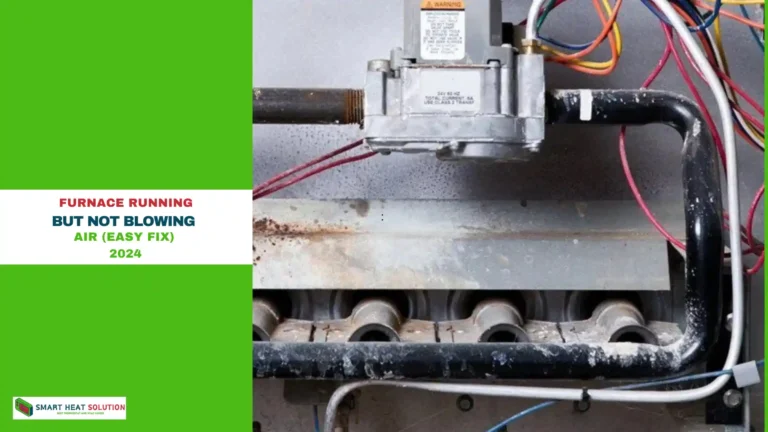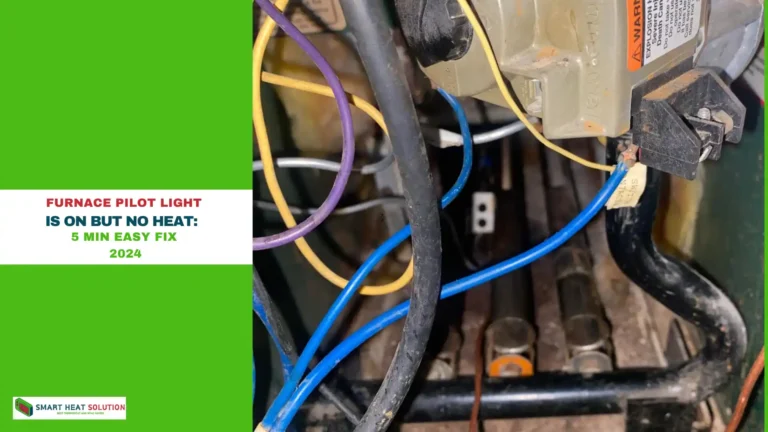Bryant Furnace Code 31: Meaning And Easy Fixes
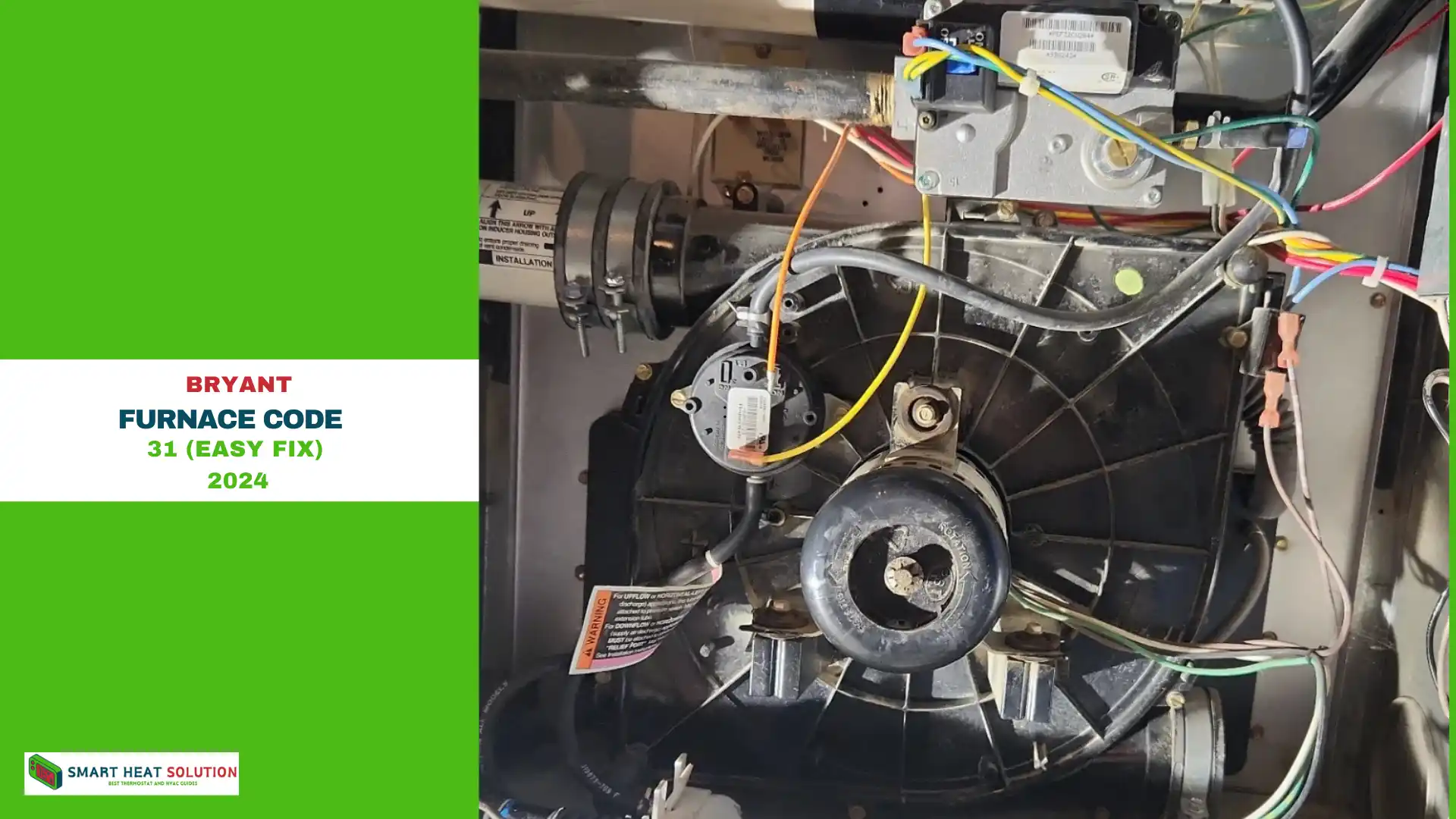
If you own a Bryant furnace, you might encounter Bryant Furnace Code 31, which signals a specific issue within your heating system that requires attention.
This article explains what Code 31 means, its causes, how to diagnose it, and the steps you can take to fix it.
By understanding this error code, you can ensure your furnace operates efficiently and effectively during the colder months.
What is Bryant Furnace Code 31?
Bryant Furnace Code 31 is an error message that points to a malfunction in the pressure switch or inducer motor.
These two components are critical for ensuring proper airflow and ventilation, which are essential for your furnace to function correctly.
When this code appears, it’s a warning that your furnace is not operating as intended, and addressing the issue promptly is necessary for maintaining your home’s warmth.
Causes of Bryant Furnace Code 31
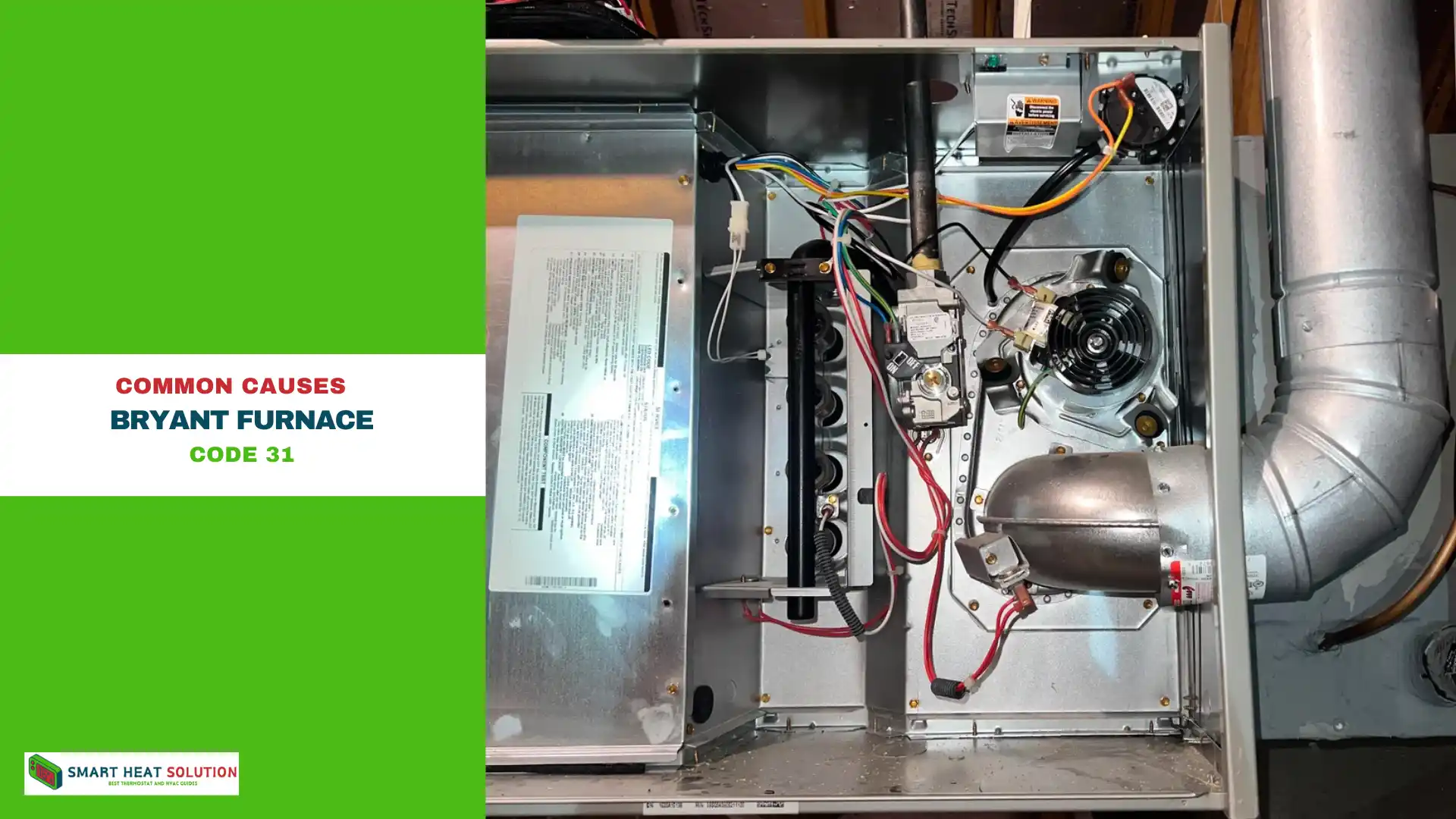
The primary causes of Bryant Furnace Code 31 revolve around airflow, pressure, and ignition issues. Here are the common culprits:
1. Clogged or Dirty Air Filter
One of the most frequent causes of Bryant Furnace Code 31 is a clogged air filter.
The air filter plays a crucial role in maintaining airflow within the furnace. When dust, dirt, or debris accumulate in the filter, it restricts airflow, which may trigger the pressure switch to activate the error code.
Solution: Regularly clean or replace your air filter according to the manufacturer’s recommendations to avoid this issue.
2. Faulty Pressure Switch
The pressure switch is responsible for ensuring proper airflow and ventilation before the furnace ignites.
If the switch malfunctions, it may fail to open or close correctly, resulting in Bryant Furnace Code 31. This issue can stem from mechanical failure, blockages, or improper calibration of the pressure switch.
Solution: Inspect the pressure switch for any visible signs of damage or wear and check if it’s opening and closing correctly. If necessary, recalibrate or replace it.
3. Vent Pipe Blockages
Vent pipes carry exhaust gases away from the furnace, ensuring that combustion air flows freely.
When these pipes become blocked—due to debris, animal nests, or ice buildup in colder weather—the airflow can be compromised. This blockage can cause the pressure switch to trigger Code 31 as a safety measure.
Solution: Regularly inspect and clear any blockages in the vent pipes to maintain proper airflow and prevent potential issues.
4. Ignition System Failure
The ignition system is a key component in starting the furnace. If parts such as the igniter, gas valve, or flame sensor fail to operate correctly, the furnace may struggle to ignite or maintain a consistent flame, leading to Bryant Furnace Code 31.
Solution: Inspect the ignition system and its components. Replace any faulty parts or seek professional assistance if the issue persists.
Step-by-Step Process to Diagnose Bryant Furnace Code 31
The first step in resolving Code 31 is identifying the root cause. Start by inspecting the key components of your furnace. Here’s how you can troubleshoot each potential problem:
1. Check the Air Filter for Blockages
A clogged or dirty air filter is one of the most common causes of Bryant Furnace Code 31. When the air filter is clogged, it restricts airflow, which can cause pressure issues in the system.
How to Check:
- Turn off the furnace.
- Locate the air filter, which is usually found near the return air duct.
- Inspect the filter for dirt, dust, or debris.
- If the filter appears dirty, replace it with a new one.
- Once replaced, restart the furnace and check if the error code has cleared.
2. Inspect the Pressure Switch
The pressure switch plays a critical role in ensuring proper airflow and gas combustion. If it is malfunctioning, the furnace won’t operate as expected, and it may trigger Code 31.
How to Inspect:
- Turn off the furnace and disconnect its power supply.
- Locate the pressure switch near the blower motor or vent system.
- Check for visible damage or wear.
- Test the switch by manually operating it to see if it opens and closes properly.
- If the switch is faulty, it may need to be replaced or adjusted.
3. Clear Obstructions in the Vent Pipe
Blocked vent pipes can obstruct the flow of exhaust gases, leading to improper pressure readings and furnace malfunctions.
How to Clear Blockages:
- Turn off the furnace to avoid any accidents.
- Locate and inspect the vent pipes for any debris or buildup.
- Use a vacuum or brush to clear any blockages.
- Once the vent pipes are clear, restart the furnace and check if Code 31 persists.
4. Test the Ignition System
The ignition system includes components such as the igniter, gas valve, and flame sensor. A malfunction in any part of the ignition system can prevent the furnace from starting properly.
How to Test the Ignition System:
- Turn off the furnace and disconnect its power.
- Inspect the igniter, gas valve, and flame sensor for visible damage.
- Test each component for proper functionality.
- If any component is malfunctioning, replace the faulty parts.
How to Fix Bryant Furnace Code 31
After diagnosing the issue, the next step is to fix it. Here’s a step-by-step guide on how to resolve the problem:
1. Replace or Clean the Air Filter
If the air filter is clogged:
- Remove the filter and inspect it for dirt and debris.
- Replace it with a new, clean filter.
- Restart the furnace and check if the error code has cleared.
2. Adjust or Replace the Pressure Switch
If the pressure switch is malfunctioning:
- Turn off the furnace and disconnect the power supply.
- Inspect the pressure switch for signs of wear or damage.
- If necessary, adjust the switch settings or replace the faulty component.
3. Clear the Vent Pipe of Obstructions
If the vent pipe is blocked:
- Turn off the furnace and inspect the pipes.
- Use a vacuum or brush to remove any debris or buildup inside the pipes.
- Restart the furnace after clearing the blockages.
4. Repair or Replace the Ignition System
If the ignition system is faulty:
- Turn off the furnace and disconnect its power.
- Inspect all ignition components, including the igniter, gas valve, and flame sensor.
- Replace any malfunctioning parts.
Preventive Maintenance Tips to Avoid Bryant Furnace Code 31
Taking proactive steps to maintain your furnace will help prevent Code 31 and other issues in the future. Here are some tips to ensure your furnace runs smoothly year-round:
1. Change Air Filters Regularly
To prevent airflow problems, change the air filter every 1 to 3 months, depending on usage. A clean air filter will ensure proper airflow and avoid unnecessary strain on the furnace.
2. Schedule Professional HVAC Maintenance
Have your furnace inspected and maintained by a professional HVAC technician at least once a year. Regular maintenance helps identify and fix minor issues before they become major problems.
3. Keep Vent Pipes Clear
Ensure that the vent pipes are free of obstructions. Regularly inspect the venting system to remove any debris that could cause blockages and disrupt airflow.
4. Test the Ignition System Annually
Before the heating season begins, test the furnace’s ignition system to ensure it is functioning correctly. This can help prevent unexpected breakdowns and ensure the furnace is operating efficiently.
Conclusion
Bryant Furnace Code 31 typically arises from issues with airflow, pressure, or ignition. By following the troubleshooting steps outlined in this guide, you can identify and fix the root cause of the problem. Whether it’s a dirty air filter, faulty pressure switch, blocked vent pipe, or ignition issue, addressing these problems promptly will restore your furnace to optimal performance. Regular maintenance is essential to prevent recurring issues and ensure your furnace operates efficiently for years to come.will also help prevent future occurrences of Code 31, ensuring that your furnace operates efficiently for years to come.

I’m Alan William’s, the founder of SmartHeatSolution.com. I am from California, USA, I’m passionate about innovative heating technologies and their impact on our homes and businesses. With a background in electrican and home repair , I aim to make smart, energy-efficient heating accessible to everyone. When I’m not writing, I’m likely interested in all the thermostat brands and their new technnology. Thanks for stopping by!

